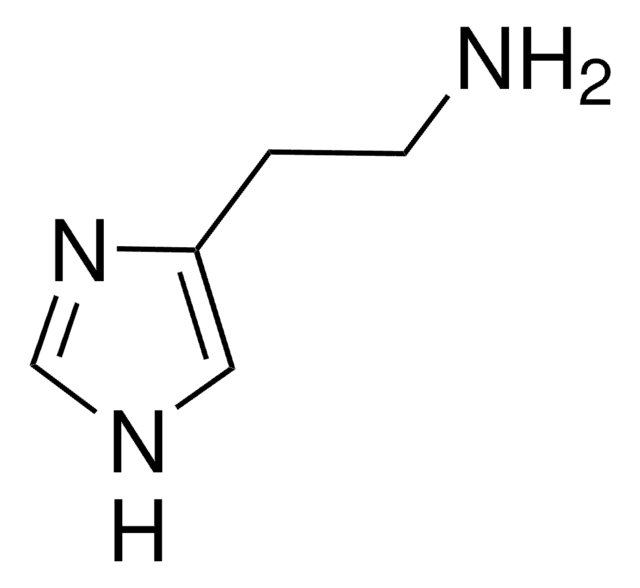SML2908
A71915 trifluoroacetate
≥95% (HPLC)
Synonim(y):
(Arg6, β-cyclohexyl-Ala8, D-Tic16, Arg17, Cys18)-Atrial Natriuretic Factor (6-18) amide (Cys7→Cys18 disulfide), TFA salt, A 71915, A-71915, Arg-Cys-β-cyclohexyl-Ala-Gly-Gly-Arg-Ile-Asp-Arg-Ile-D-Tic-Arg-Cys-NH2 (Cys2→Cys13 disulfide), TFA salt, RC-(Cha)-GGRIDRI-(D-Tic)-RC-NH2 (Cys2→Cys13 disulfide, TFA salt, [Arg6, Cha8]ANP-(6-15)-D-Tic-Arg-Cys-NH2 (Cys7→Cys18 disulfide), TFA salt
About This Item
Polecane produkty
Działania biochem./fizjol.
Kod klasy składowania
11 - Combustible Solids
Klasa zagrożenia wodnego (WGK)
WGK 3
Temperatura zapłonu (°F)
Not applicable
Temperatura zapłonu (°C)
Not applicable
Certyfikaty analizy (CoA)
Poszukaj Certyfikaty analizy (CoA), wpisując numer partii/serii produktów. Numery serii i partii można znaleźć na etykiecie produktu po słowach „seria” lub „partia”.
Masz już ten produkt?
Dokumenty związane z niedawno zakupionymi produktami zostały zamieszczone w Bibliotece dokumentów.
Nasz zespół naukowców ma doświadczenie we wszystkich obszarach badań, w tym w naukach przyrodniczych, materiałoznawstwie, syntezie chemicznej, chromatografii, analityce i wielu innych dziedzinach.
Skontaktuj się z zespołem ds. pomocy technicznej






